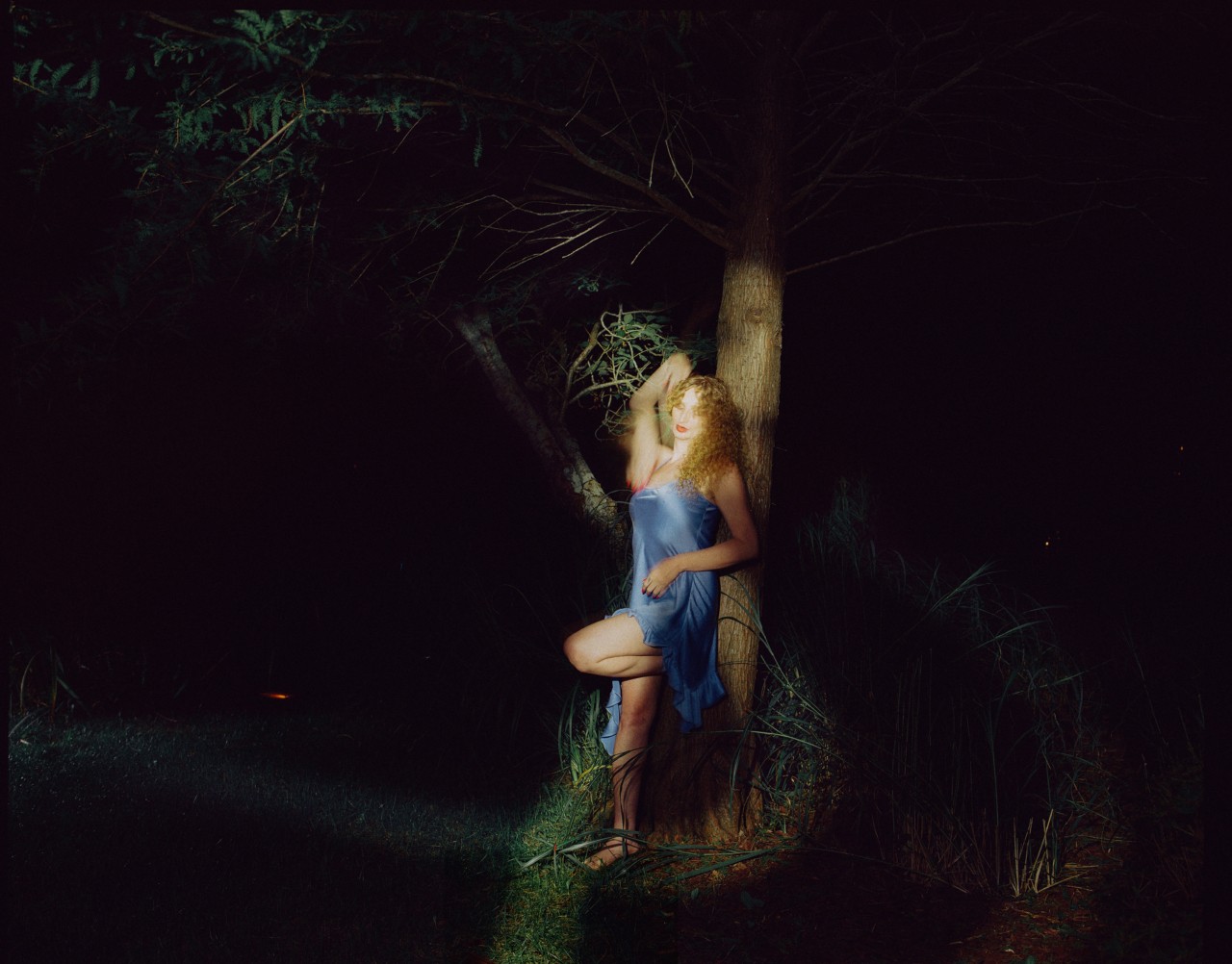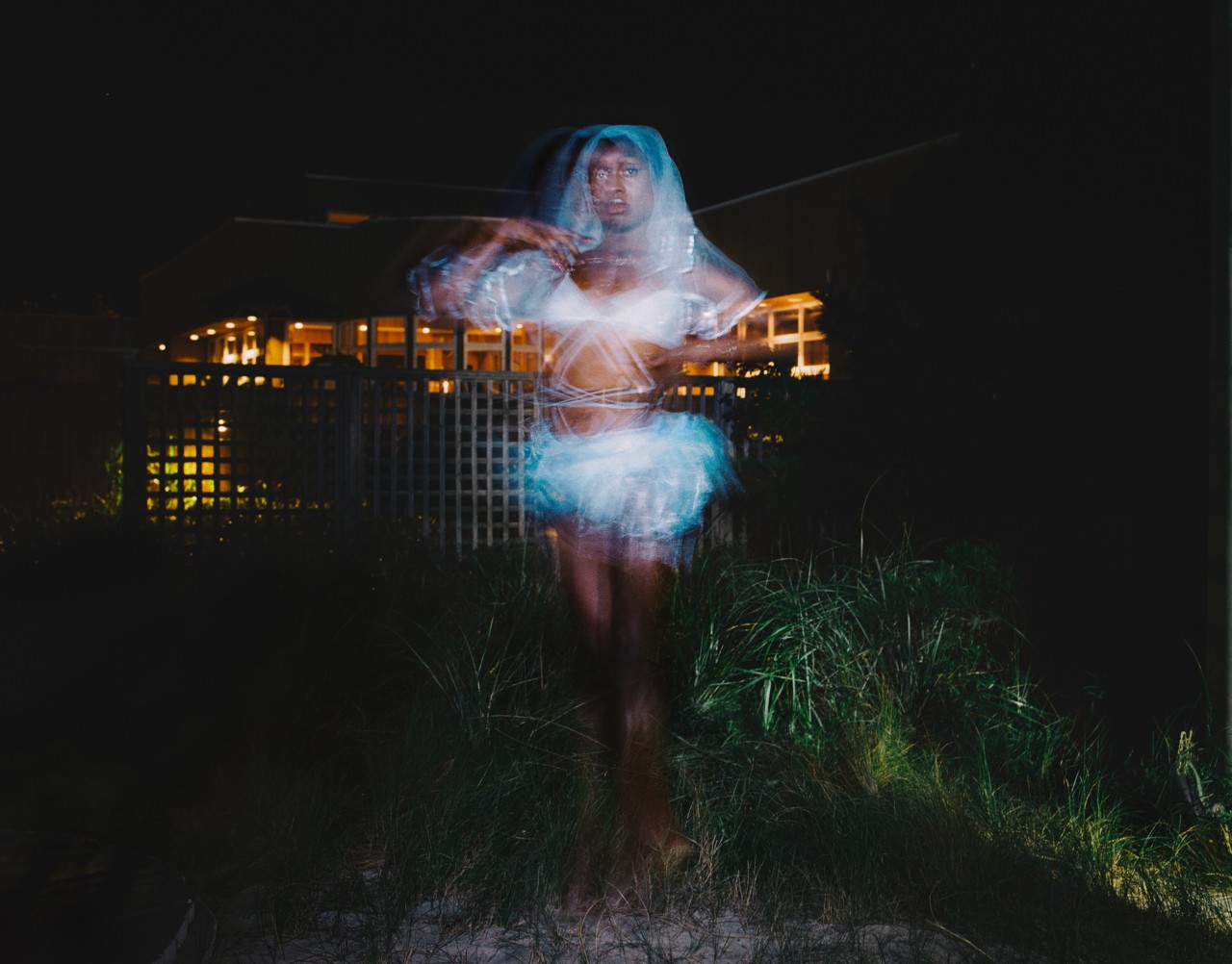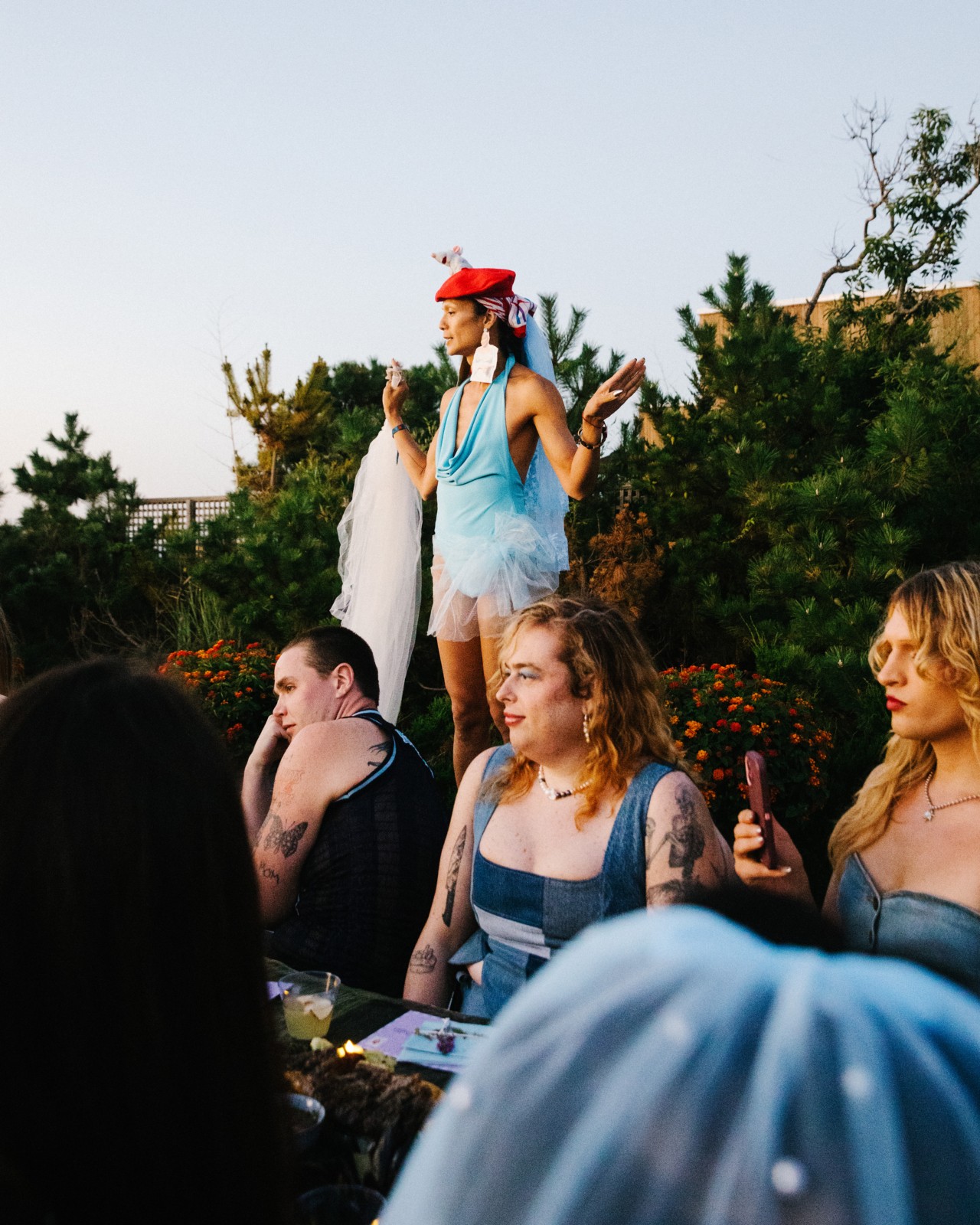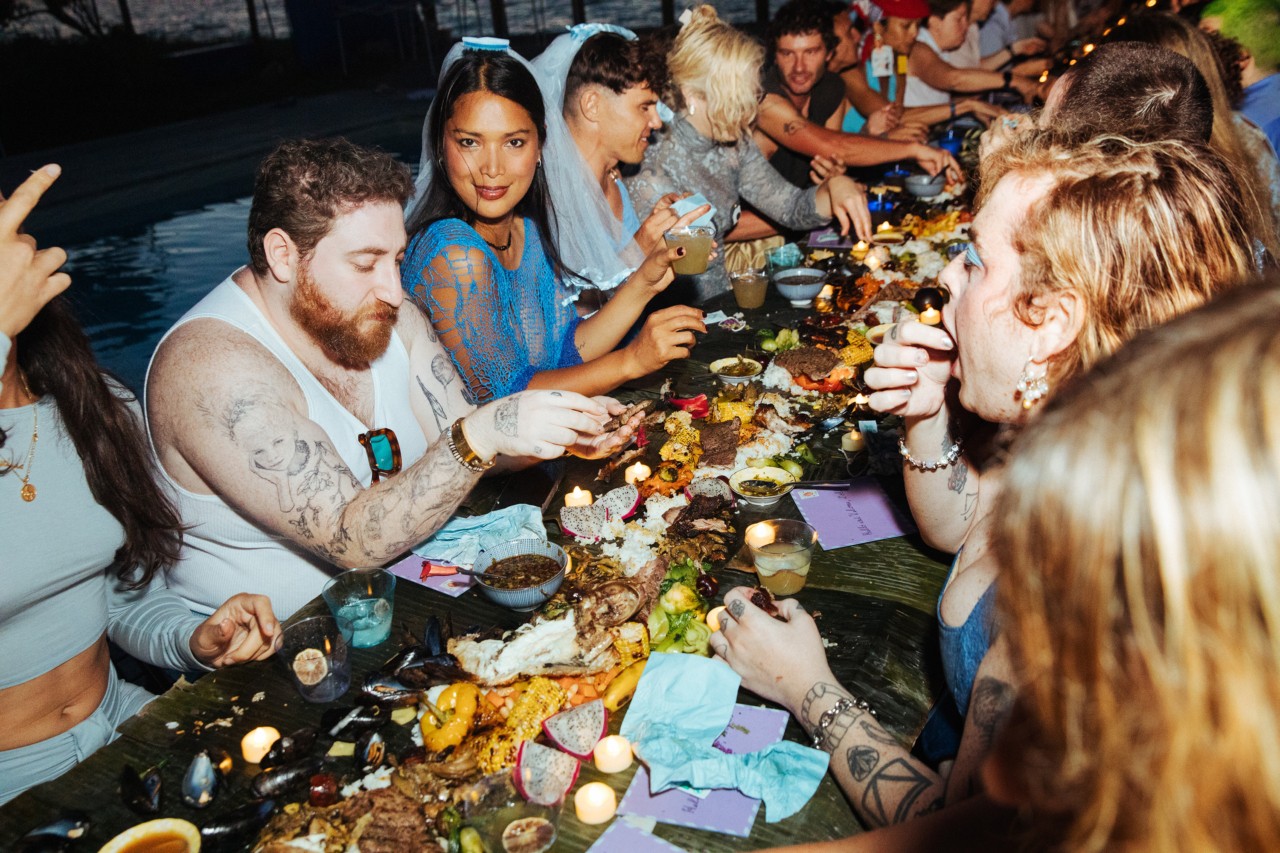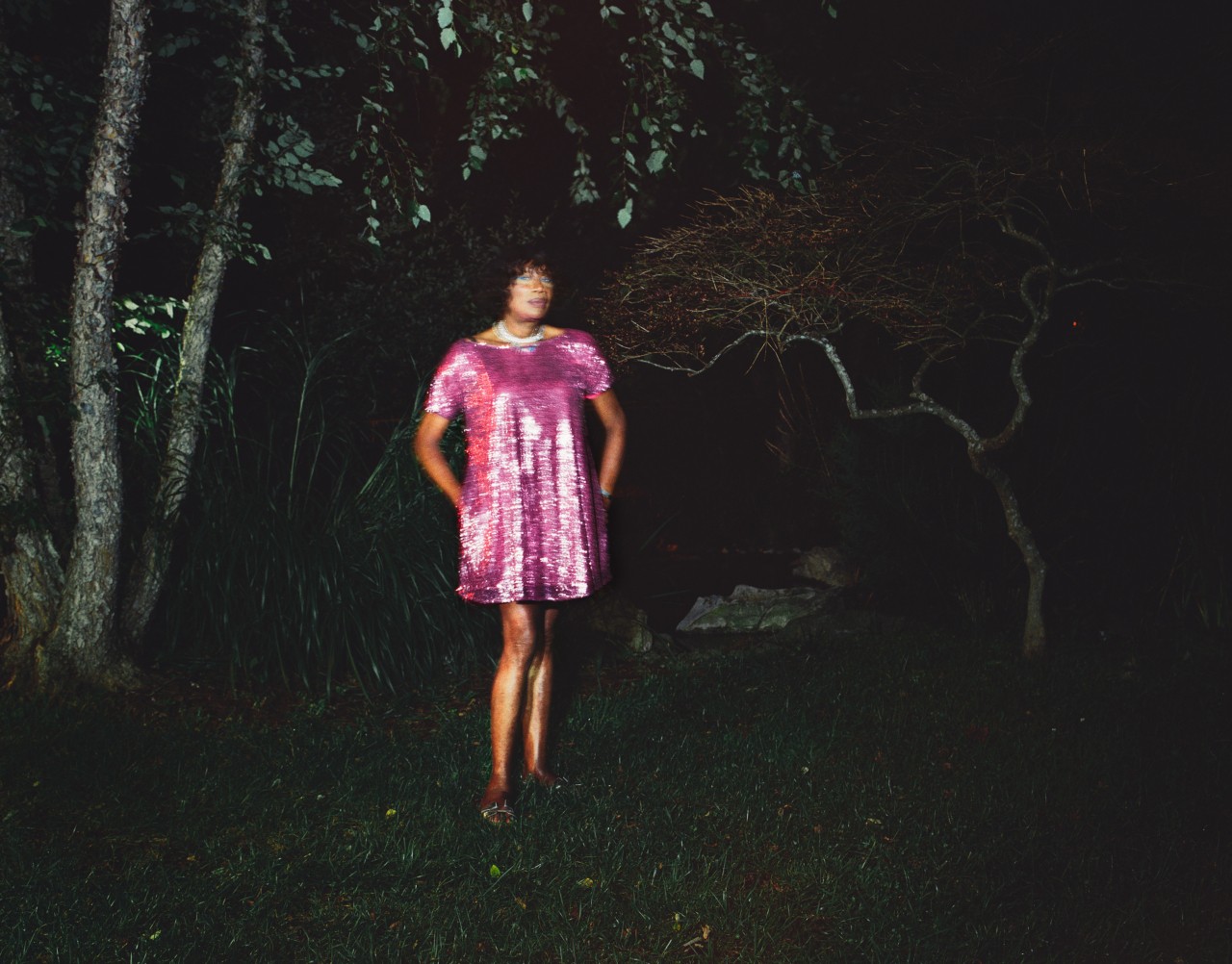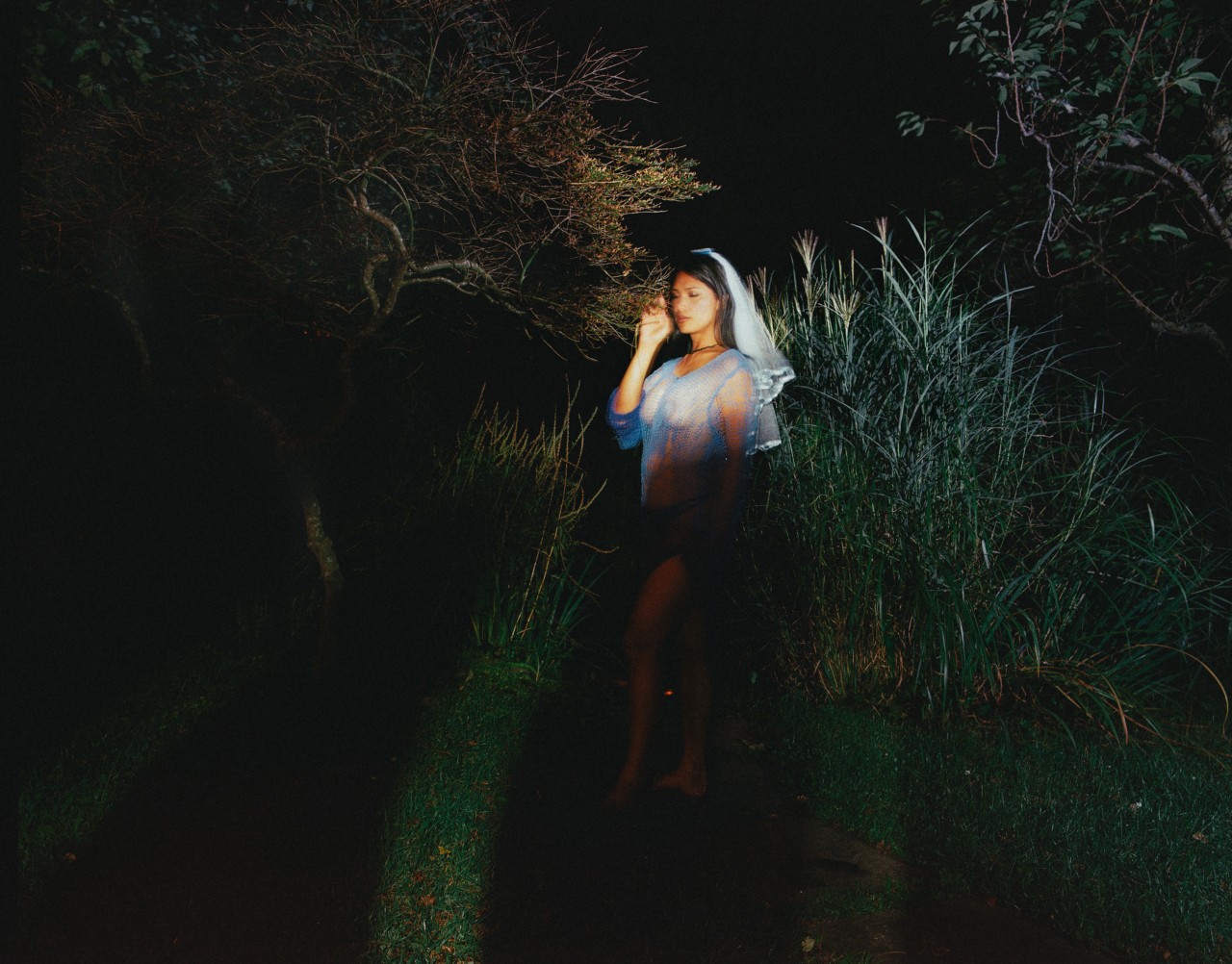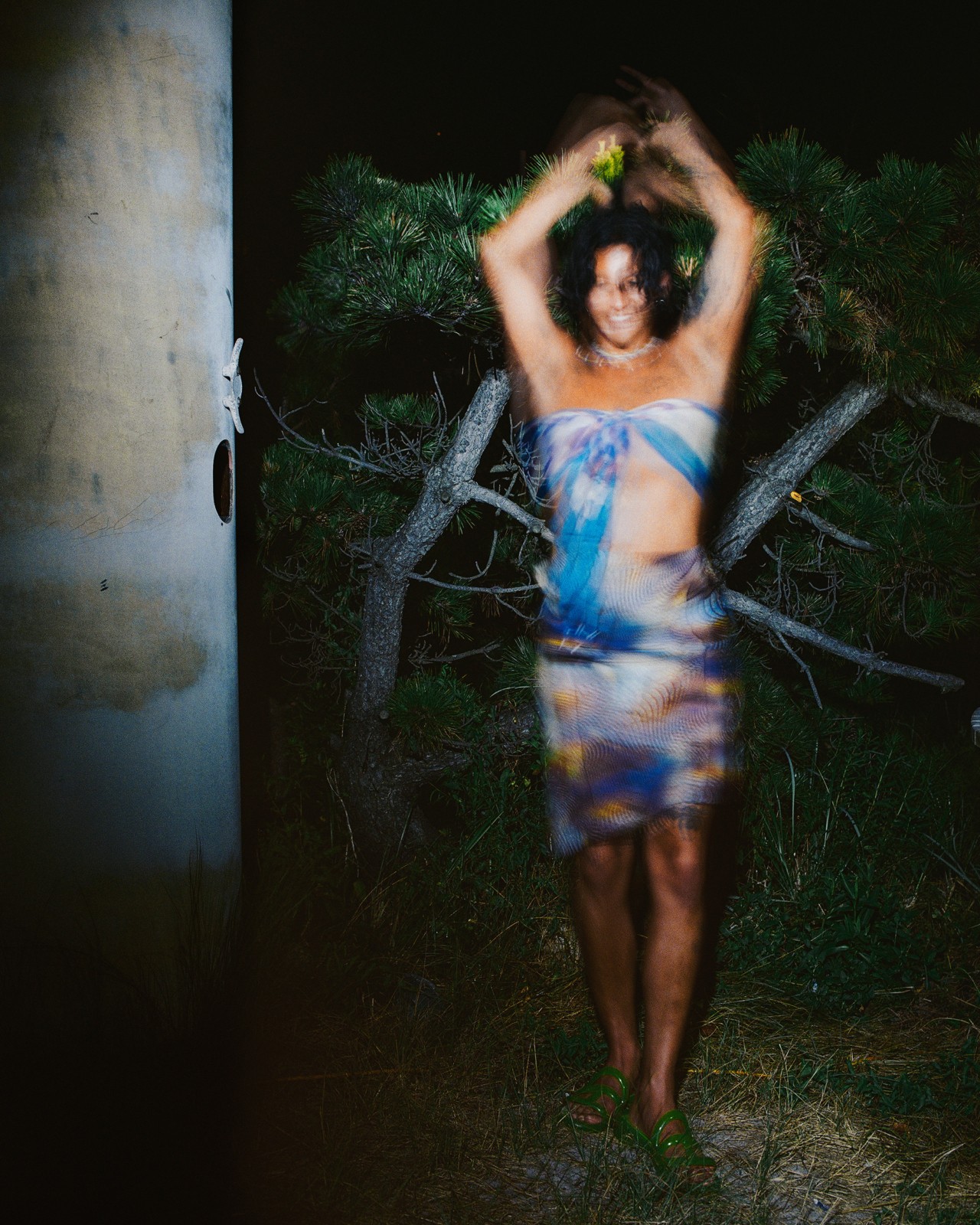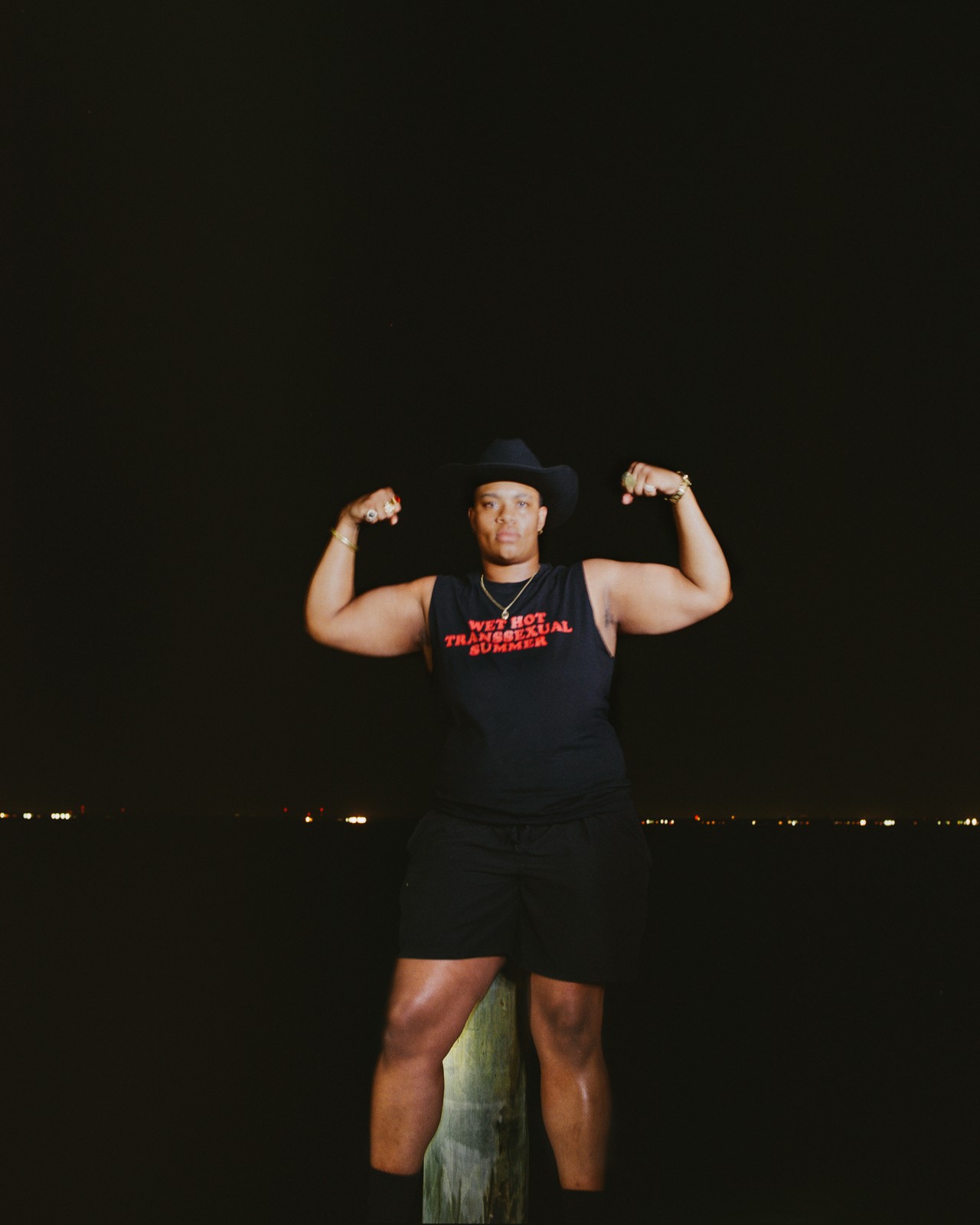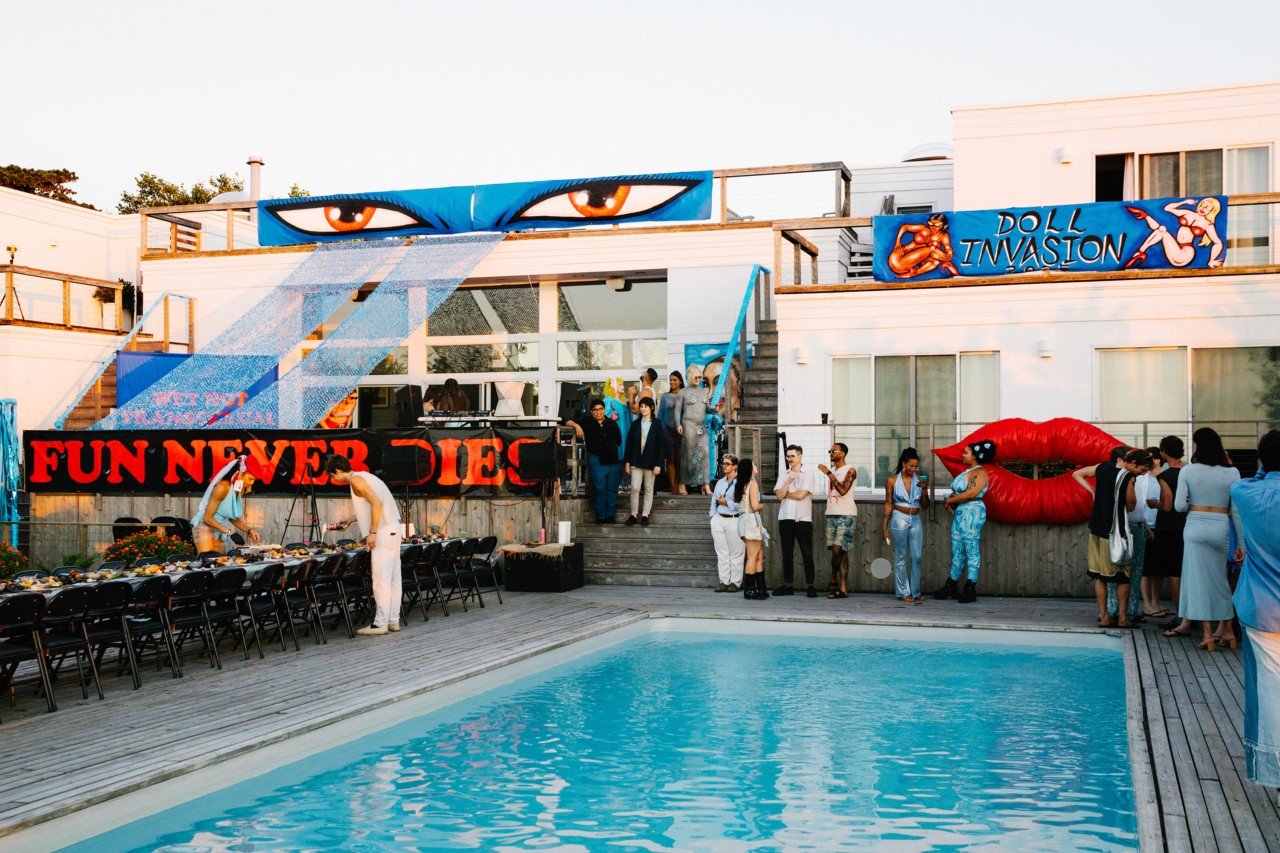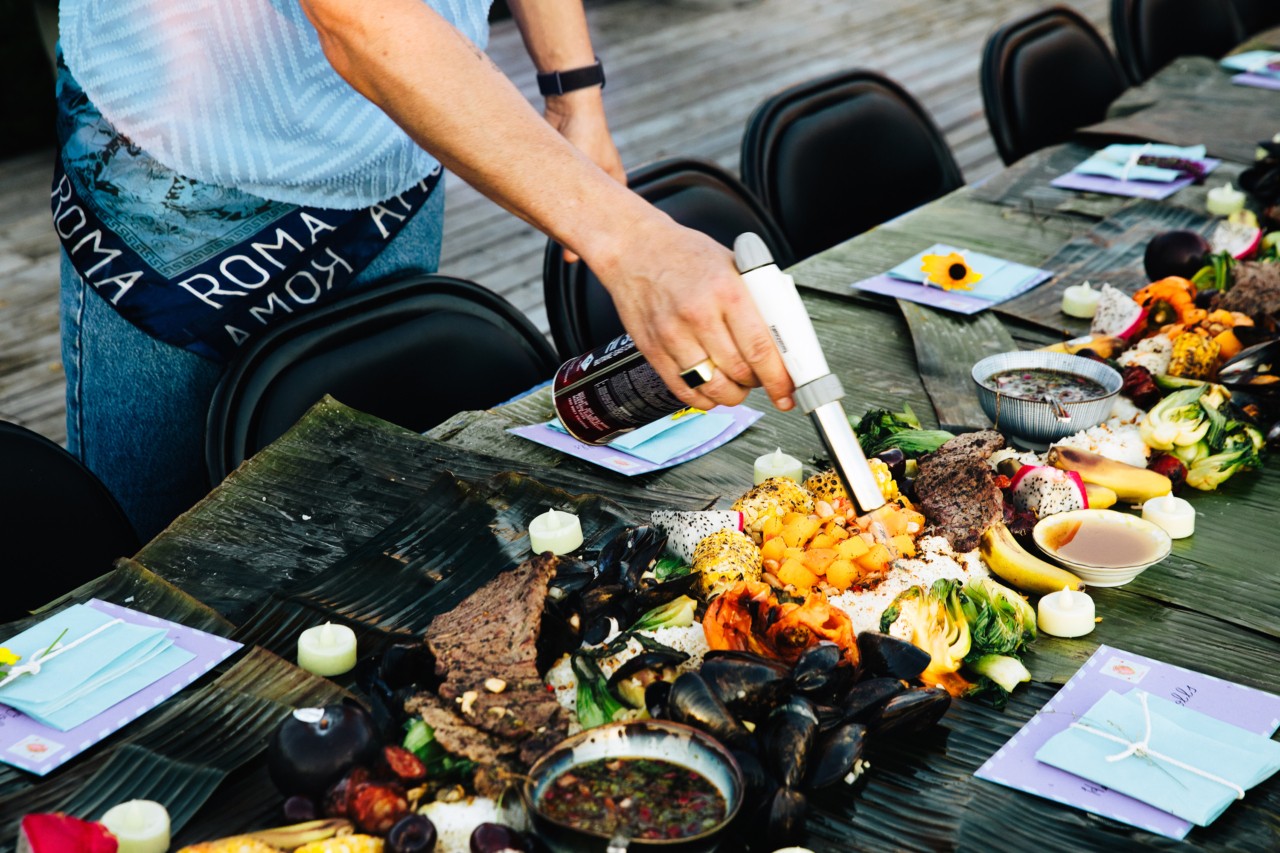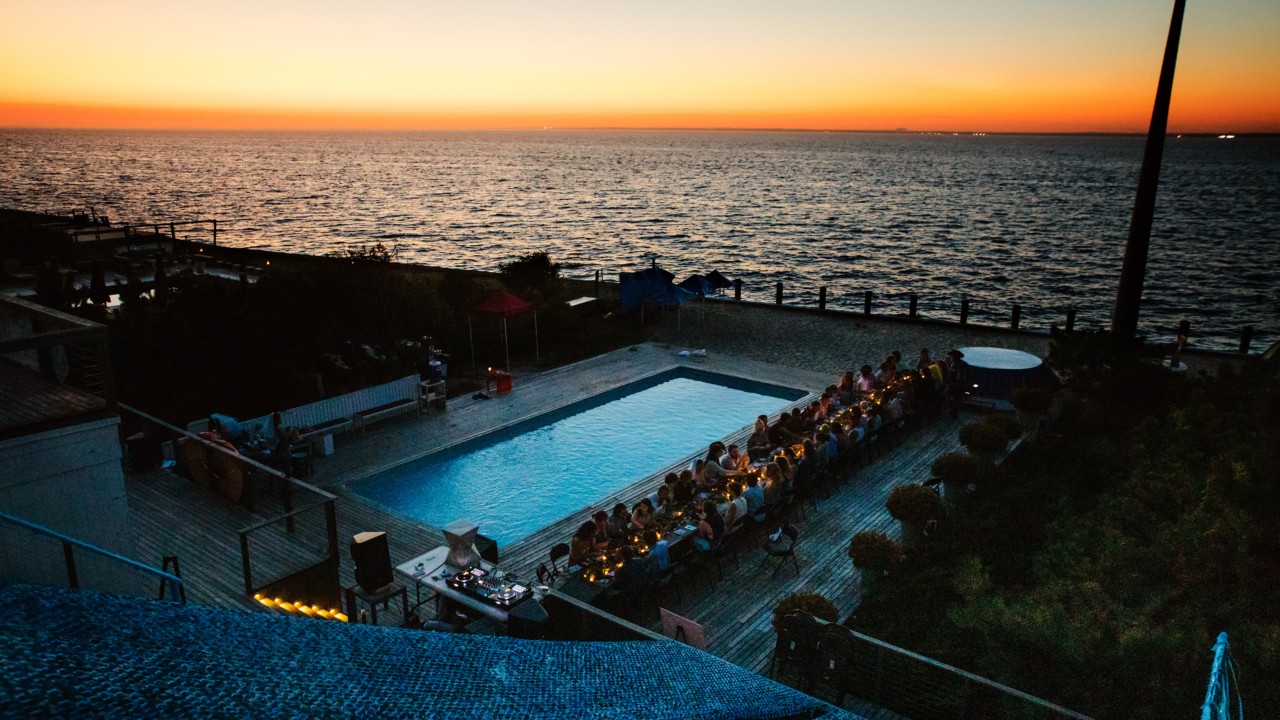
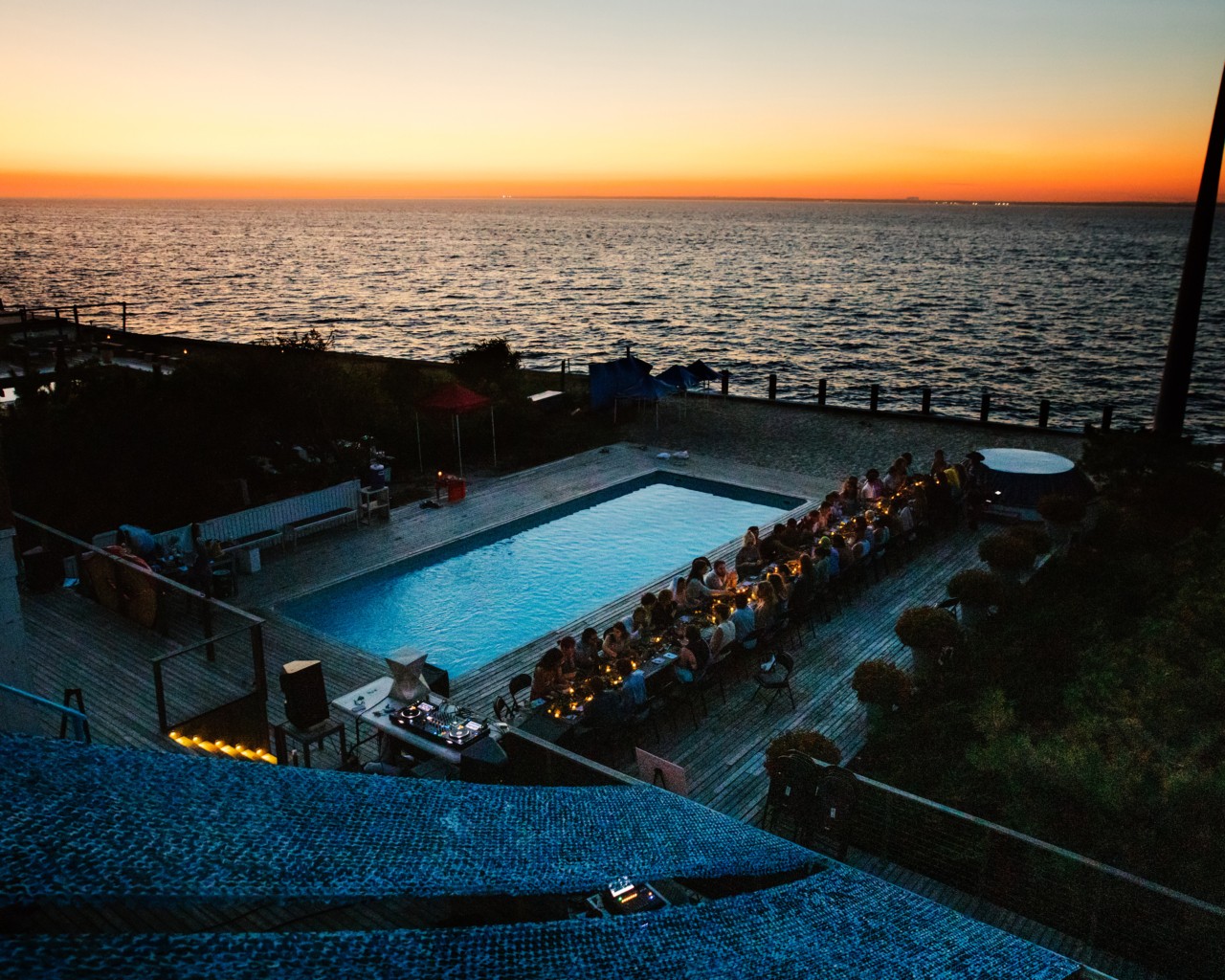
Words by Ita Segev
Photographs by Justin J. Wee
“When I first started organizing Doll Invasion, in my mind, I was not a doll,” Fran Tirado, Doll Invasion’s founding director, or Doll-in-Chief, confessed to me in one of many Zoom meetings leading up to this year’s festivities. This might be surprising, given that this is the third year she’s been orchestrating the Queer|Art and Advocates for Trans Equality fundraiser that is also a weekend of celebrations bringing a record number of trans people for a free getaway on the historically LGB-(but-not-so-much-T)-friendly Fire Island. But that is how she felt: “I was out as trans, I was on HRT [hormone replacement therapy], but I had this idea of dollhood as something that was unattainable and over there, while I was over here.”
What makes a doll a doll? Generally speaking, it’s a term of endearment which originates in ballroom culture and is currently used to describe trans women and femmes more broadly. But like womanhood, that definition is relational; it is full of history and context, of expectations and tensions, of material needs and ephemeral longings, and is ultimately, profoundly felt. But one such doll who managed to traverse the unattainability of Tirado’s then-definition was Filipina American supermodel, author, and emerging filmmaker Geena Rocero. So Tirado made sure to invite her to the inaugural Invasion, but kept her expectations minimal: “I hoped Geena would come, and maybe lend her name and star power as a host.” But Rocero had other plans, and replied by texting: “I’ll cook for the dolls.”


Rocero followed up by buying all the ingredients (“completely on her own dollar,” Tirado recalled in awe), and worked for many hours (“in a very small kitchen, but we’re Filipino we figure it out,” Rocero said with a smile), with close friends and collaborators LJ Perez and Valeria Moraga to prepare a Kamayan feast—a traditional Filipino communal meal where grilled pork, fish, shrimp, rice, vegetables, and freshly cut fruit were served on banana leaves and eaten with one’s hands, alongside signature cocktails and a meticulous ambience planned to a T. More than 30 of Doll Invasion’s team members and close friends shared this moment of abundance, in the evening leading up to Doll Invasion’s first-ever public programming. The Kamayan dinner turned out to be, according to Tirado “the necessary overture to the symphony that is Doll Invasion.”
The following year, as growing excitement about Doll Invasion led to hundreds of more folks wanting to attend its public programming, the Kamayan dinner remained an anchoring ritual for its now 50-plus attendees who were part of a team of more than 70 queer and trans talent, close friends, and staff. It served both as an offering of gratitude for the many months of planning work leading up to the main event, and a respite before a host of transsexuals and allies caught the free bus and/or ferry to join the main event. Yet even in the face of the dinner’s growing size, elegance, and public-facing approach, its for-and-by-the-dolls and all-hands-on-deck spirit remained its guiding core.
My own arrival to that dinner last year, which was my first time going to Fire Island, was accompanied by a sense of anxiety regarding my belonging: both to the historically white-cis-and-wealthy property owned island, and to some of the famous dolls-in-attendance who I never personally met, but nonetheless, para-socially projected onto. But that anxiety began to quell as soon as I arrived at the dinner location and was greeted by Rocero, who asked me with a smile: “Do you know how to cut a pineapple?”.


As I was using my newly acquired slicing methods, and watching the other dinner attendees setting up the banana-leaf-covered long table, the beauty of the island and dolls against the backdrop of the sunset and ocean struck me. Perhaps beyond the material bridge being built between our predominantly working-class, New York City community and a lush, oceanside natural environment, we were also there to build a bridge between the belonging we each imagined was untenable to us, but so generously assumed other dolls inherently exude.
Now in its third iteration, the Kamayan dinner team has decided on a vast change in its signature all Filipino cuisine. This year, Rocero and her collaborators decided that the evening would honor the late Cecilia Gentili, the Gálvez born and New York City-based revolutionary organizer, artist, and mother to many in the trans community. Participants were asked to wear shades of blue (as she did, in her one-woman show, Red Ink), which serendipitously corresponded with the many blue decorations Doll Invasion’s creative director, Willie Norris, had independently decided to adorn the idyllic ocean front property for the main event the next day.
The Kamayan tradition married Gentili’s taste palette and ancestry. After sipping gaucho margaritas with a yerba mate syrup twist, and gin with elderflower-tonic (and mocktails alongside the same taste pallets), guests were asked to sit by the very long table where different hand-eaten iterations of Argentinian dishes were presented on a spread of banana leaves. The feast included asado grilled flag stake, short rib, chorizo, grilled trout, chimichurri glazed tilapia, grilled corn, adobo mushrooms and bok choy with oyster sauce and garlic, ginger-garlic broth muscles, chimichurri rice, and a squash and bean stew called locro, all served alongside Filipino soy vinegar from the island Rocero’s father is from, garlic, ginger, cilantro dipping sauce, pina kraut vinegar and chimichurri with chilli sauce.

Starting with the very first Doll Invasion, Gentili was more than just a guest of honor, but a sun around which the community revolved, and will forever be the patron-saint of the festivities. But it was her relationship to the Kamayan dinner that Rocero wanted to uplift. Cecilia attended that first Kamayan dinner shortly after she purchased her first property in upstate New York. Thrilled by Rocero’s cooking (“orgasmic,” she called it), Gentili asked Rocero to bless her new home by cooking another feast there, too. Rocero agreed, but the plan never came into fruition, as Gentili died six months later at just 52 years old. Doll Invasion’s community, who experienced Gentili’s aliveness as so potent, so undiminishable, was left to reckon with just how precarious and invaluable every moment you could have spent with someone you love or admire can turn out to be. “This is a full circle moment,” Rocero said. “It feels like the year for me to offer her that tribute, the home blessing I never got to give her.”
Someone who got to bless that home with Gentili, and was in attendance at the Kamayan dinner, was Río Sofia, Queer|Art’s co-director and Gentili’s daughter, who alongside her husband Cyd Nova, lived with Gentili and her partner Peter Scotto on said property in upstate New York. Sofia recalled how proud Gentili was to buy her own home as a formally incarcerated, undocumented, sex worker who managed to work her way to becoming a celebrated author and performance artist, founding director of her own organization, and then a naturalized citizen and property owner.


“I remember the first day I got to her property,” Sofia said. “We were walking through this part of the woods that we were seeing for the first time. We got to the top of this ridge, and as we were looking out she said: ‘baby this is ours.’ It was wild to see her work so hard to get this thing that can finally give her some inner peace, and immediately want to share it with all her friends. But that is what she did. There was something deeply satisfying about witnessing that version of Cecilia. When she walked through those woods, when she hosted people at her home, she didn’t have to be THE Cecilia Gentili, she got to just be Ceci.”
That legacy of hospitality, of generosity, of an ‘I’ that can finally melt into a ‘we’ is also inherent to the Kamayan dinner: “We actually have a name for this in the Philippines, it’s a system of social existence called Kapwa,” Rocero shared. “It means that your inner being is a reflection of who I am and that there is a deep sense of interconnectedness and shared identity with others, that our well-being is intertwined.”
Perhaps it is this shared identity that dispelled my nerves that first day upon arrival to the Kamayan last year, and what left Tirado feeling assured the year before that “I came to Doll Invasion not feeling like I was a doll, but left knowing I was one.” This sense of knowing, it seems, is dependent on our plurality, on our existence beyond one singular idea or model or right way to be. This plurality is also the way by which we have survived, and might continue to in this moment—as liberal tokenizing and individualized “trans representation” models of yesteryear collapse and an unabashed, genocidal, trans-obsessed far-right fascism reveals itself.


One counterintuitive way to to tap into that plurality, into that aliveness, even in the darkest of moments, is also joy and revelry. Or as Tirado put it to the Doll Invasion team, tearing up: “No matter what is going to happen, fun never dies, That is the model Cecilia left us with: her ability to be one of the biggest revolutionaries of her era, and a hilarious slut, all at the same time.” And fun was indeed had at this year’s Kamayan dinner, alongside a much needed reminder of our belonging to each other, to the beautiful island, and to the Earth we all share.
“It was so ingrained for pre-colonial Indigenous Filipinos to eat with our hands, to wrap the remains in the banana leaf we ate on, and to deposit it all back in the Earth, because it is all biodegradable and it is where it all came from,” Rocero said. And as the Doll invasion Kamayan participants finished our delicious dinner and stood barefoot in the sand, offering love to each other, to the ocean and to Gentili as the evening came to a close, I was reminded of that cycle, and of Ceci’s glowing image: at home in nature, with her loved ones, getting to finally just be herself.


A Kamayan for the Dolls
